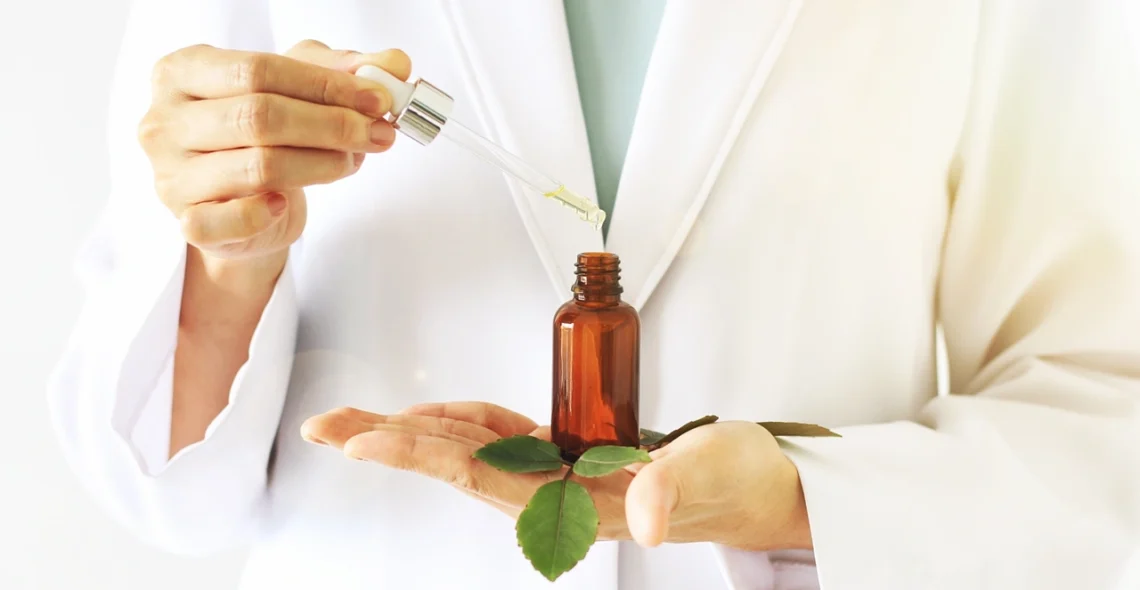A recent paper from kratom experts raised alarms over 7-OH products that pose potential health risks.
Hank Schultz, Senior Editor
December 5, 2024
At a Glance
- 7-hydroxymitragynine products are widely available.
- They’re linked to kratom but should be considered to be different products, experts said.
- Researchers warn 7-OH poses dangers that could unfairly be chalked up to kratom.
Kratom experts have raised an alarm about the increasing prevalence of 7-OH products in the market. These semi-synthetic products pose a public health risk and complicate the regulatory picture for kratom, to which they have been linked, according to the researchers.
Active metabolite of kratom constituent
The substance in question, 7-hydroxymitragynine (7-OH), is an active metabolite of mitragynine, which is one of the major alkaloids found in the leaves of kratom (Mitragyna speciosa).
7-OH has been isolated and offered as a standalone ingredient in products marketed as dietary supplements. Many of those products are sold directly to consumers online or are sold in smoke shops, vape shops and similar outlets. The sale of these products was a topic of discussion at the CHAMPS trade show that took place in late September in Denver.
In a recent letter to the editor published in the journal Addiction, five experts in the kratom field expressed concerns over 7-OH products. The researchers are associated with Johns Hopkins University, The Ohio State University and the University of Florida, Gainesville.
Kirsten Smith, Ph.D., assistant professor in the Department of Psychiatry and Behavioral Sciences at Johns Hopkins University School of Medicine, was the leading author on the letter to the editor.
The broad availability and rising popularity of 7-OH brings with it many questions that should raise red flags for regulatory authorities, according to Smith and her research colleagues.
Safety, makeup of 7-OH products unknown
For one thing, 7-OH is present in the kratom leaf in vanishingly small amounts, if at all. That means the safety profiles and pharmacokinetics of kratom leaf powders and extracts, which are relatively well described, cannot be applied to standalone 7-OH products.
“Consumers of these novel products are unwittingly exposing themselves to high-dose, MOR-binding [mu opioid receptor] formulations that have never undergone human or animal testing,” the authors noted. “Apart from toxicity risks from acute exposure, chronic 7-hydroxymitragynine product use could result in opioid-like physical dependence and possibly addiction.”
Description of 7-OH as ‘semi synthetic’
Smith said in an interview that she and her fellow authors referred to these products as “semi-synthetic” because they are produced via downstream processing of mitragynine. Exactly how that is done hasn’t been specified, nor have the conditions under which the products are produced. In that sense, the safety profiles of these products differ little from that of any unregulated street drug.
“I can’t tell you how they are making this stuff or where they are making it,” the kratom researcher told SupplySide Supplement Journal.
She emphasized that kratom leaf products — whether whole leaf powders or extracts — contain numerous constituents that affect many receptors and biochemical pathways in the body, a situation she described as “polypharmacy.”
The isolated 7-OH products, on the other hand, affect only one.
“Call them whatever you want to call them. The fact is that from a clinical standpoint you essentially have to treat them as an opioid,” Smith concluded.
7-OH adverse events will confuse picture for true kratom products
Smith expressed concerns that adverse events will eventually be associated with 7-OH products partly because the substance itself has been little studied, and the products are unregulated and made under variable quality standards.
“These companies are making this stuff in a big bathtub somewhere. Who knows how clean they are,” Smith said. “There is a lack of standardization. From batch to batch, you could have one that is not very potent and another that is super potent.”
Smith said her research into kratom products on the market has led her to conclude there is a high degree of standardization, and the products are generally free of unknown constituents, which can’t be said for the 7-OH products.
Among other concerns, she expressed fear “that adverse events might start occurring and it’s going to get blamed on kratom.”
“These products cannot be called kratom, in the same way as unaltered hemp products are not the same thing as synthetic cannabinoids,” Smith said.
The situation threatens to further muddy the regulatory picture for kratom, especially if the worst fears of the authors come to pass and a slew of serious adverse events reports start to surface. According to the experts, 10 to 15 million U.S. adults use kratom.
“Decisions regarding kratom scheduling and regulation are liable to become confused if policymakers can or will not differentiate between kratom and high- potency 7-hydroxymitragynine products synthesized in unregulated or makeshift laboratories,” the researchers wrote in the letter to the editor.
This isn’t the first time that U.S. kratom experts have raised concerns over 7-OH. In June, a group of academics— including Smith — issued a public statement on 7-OH and mitragynine pseudoindoxyl. 7-OH and mitragynine pseudoindoxyl are not present in native kratom leaf material, the researchers noted, adding that a product with high amounts of these compounds contains an isolated, purified or semi-synthetically generated form of 7-OH and/or mitragynine pseudoindoxyl.
Attorney: Regulators shouldn’t wait for adverse events to occur
Attorney Bob Durkin, a partner in the firm Amin Wasserman Gurnani and former FDA official, has dealt with a number of kratom issues. He said the time for regulators to act is now, rather than waiting for those adverse events to take place.
“This ingredient is overdue for enforcement action by FDA or state regulators. If they know where it is in commerce, they should seize immediately,” he said in an interview.
Matthew Lowe, executive director of the Global Kratom Coalition, has written to some state attorneys general based on testing showing high concentrations of 7-OH in certain products, in purported violation of state law.
“Distinguishing synthetic 7-OH isolates from kratom leaf and kratom extracts is critical to consumer safety,” Lowe said in an email. “I would, however, add that these concentrated synthetic 7-OH products are not dietary supplements either. They contain novel chemicals that are not found in nature and have not been consumed by humans before. These products are unapproved new drugs.”
A spokesperson for the U.S. Food and Drug Administration did not respond to a request for comment for this article.






